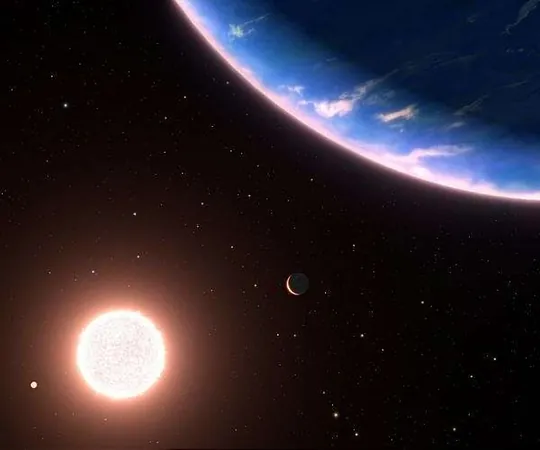
Groundbreaking Discovery: Professor Maria Drout Named to TIME100 Next 2024 List for Stellar Breakthroughs!
2024-10-09
Author: Liam
Groundbreaking Discovery: Professor Maria Drout Named to TIME100 Next 2024 List for Stellar Breakthroughs!
In an exciting announcement this week, the 2024 TIME100 Next list revealed that Associate Professor Maria Drout from the David A. Dunlap Department of Astronomy & Astrophysics at the University of Toronto has been recognized as one of the influential figures shaping the future of science. This prestigious recognition highlights emerging leaders across various fields including business, entertainment, politics, health, and activism, showcasing innovative individuals making significant impacts.
"I was honored (and quite frankly shocked) to be included on this year’s TIME100 Next list," expressed Drout. "It has been my great privilege to work with Ylva for the past eight years and watch our careers and scientific ideas blossom."
Drout's groundbreaking work, alongside Assistant Professor Ylva Götberg from the Institute of Science and Technology in Austria, has produced a revolutionary approach to identifying a unique class of stars. These stars, characterized by the stripping away of their outer hydrogen layers—likely due to interactions with a companion star—are known as hot helium stars. While theorized to be relatively common, they have proven elusive and difficult to locate; prior to their research, only one candidate had been identified.
By combining their expertise, Drout and Götberg developed a sophisticated model to guide their search for these cosmic wonders and employed both ground-based and space telescopes in their explorations. Their diligent efforts paid off with the identification of hundreds of helium star candidates, with 25 of them undergoing detailed study.
This discovery holds immense importance in the field of astrophysics, as these helium stars are believed to be the progenitors of neutron star mergers—a phenomenon that has profound implications for understanding gravitational waves—and may also lead to a rare type of supernova explosion. Their pivotal findings were published in the esteemed journal Science last year, marking a notable advancement in our understanding of stellar evolution.
As the scientific community celebrates this achievement, Drout’s recognition further emphasizes the crucial role of continuous research and collaboration in unraveling the mysteries of the universe. For more information on Drout’s pioneering work, visit the Dunlap Institute's website. Stay tuned for more updates on the stunning discoveries emerging from the world of astrophysics!









 Brasil (PT)
Brasil (PT)
 Canada (EN)
Canada (EN)
 Chile (ES)
Chile (ES)
 España (ES)
España (ES)
 France (FR)
France (FR)
 Hong Kong (EN)
Hong Kong (EN)
 Italia (IT)
Italia (IT)
 日本 (JA)
日本 (JA)
 Magyarország (HU)
Magyarország (HU)
 Norge (NO)
Norge (NO)
 Polska (PL)
Polska (PL)
 Schweiz (DE)
Schweiz (DE)
 Singapore (EN)
Singapore (EN)
 Sverige (SV)
Sverige (SV)
 Suomi (FI)
Suomi (FI)
 Türkiye (TR)
Türkiye (TR)